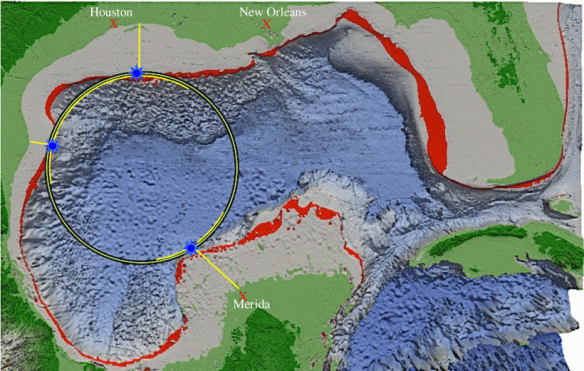In order to further explore high energy physics and thus build higher energy detectors – the LHC currently sits at 14 TeV, there are two main methods:
- Increase the magnet field of the dipoles – a 100 TeV collider would require a 15 T dipole if built at a circumference near CERN
- Increase the radius – a 270 km circumference collider would only require 5 T dipoles for 100 TeV
100 TeV Collider
The 270 km collider could be formed utilizing the same rock that the SSC had been using, and in fact could incorporate a finished SSC as an injector. The earth -Austin chalk and Taylor Marl – is much easier and cheaper to tunnel through, as demonstrated by the pace and cost during the tunneling of the SSC.
500 TeV Collider
Since there is no current prediction of energy required to further break through high energy particle physics. One could look to not only reach 100 TeV, but push the limit to 500 TeV by using a 1,900 km circumference collider with 3.2 T dipoles. One place to locate this would be 100 m below the surface in the Gulf of Mexico. This would allow it to rest in a place that is both not disturbed and would not disturb ocean life. Accelerator parameters have been calculated.
